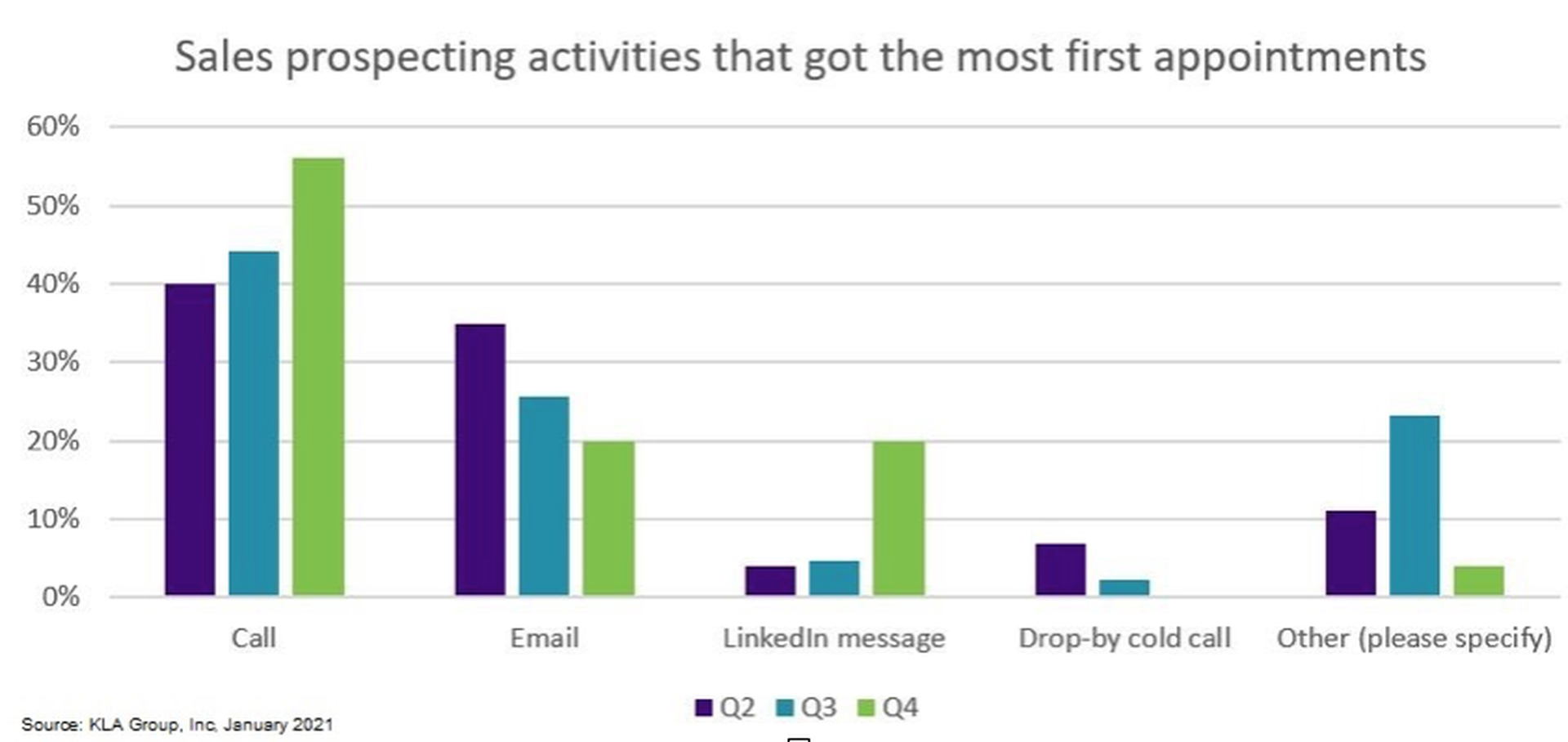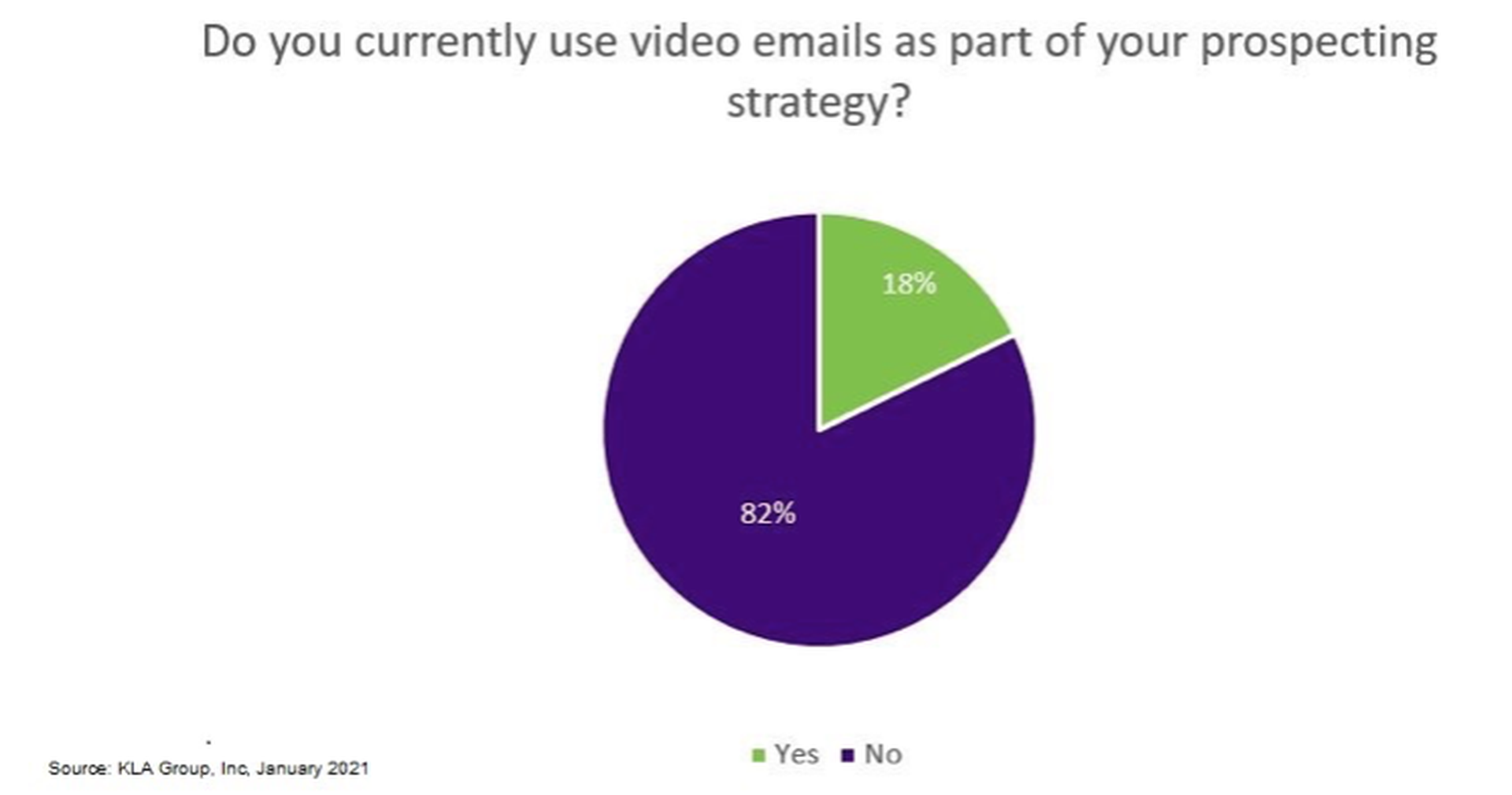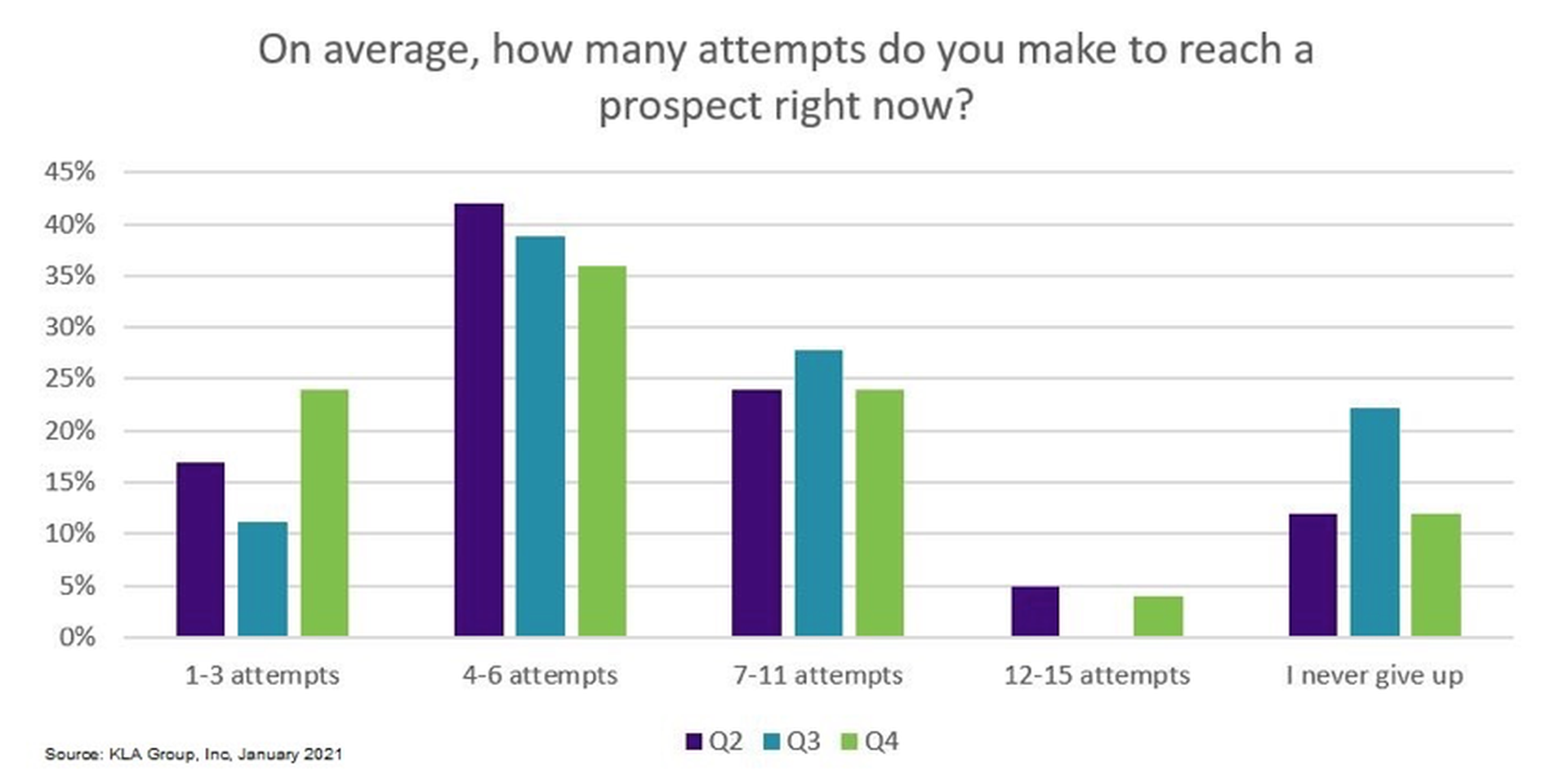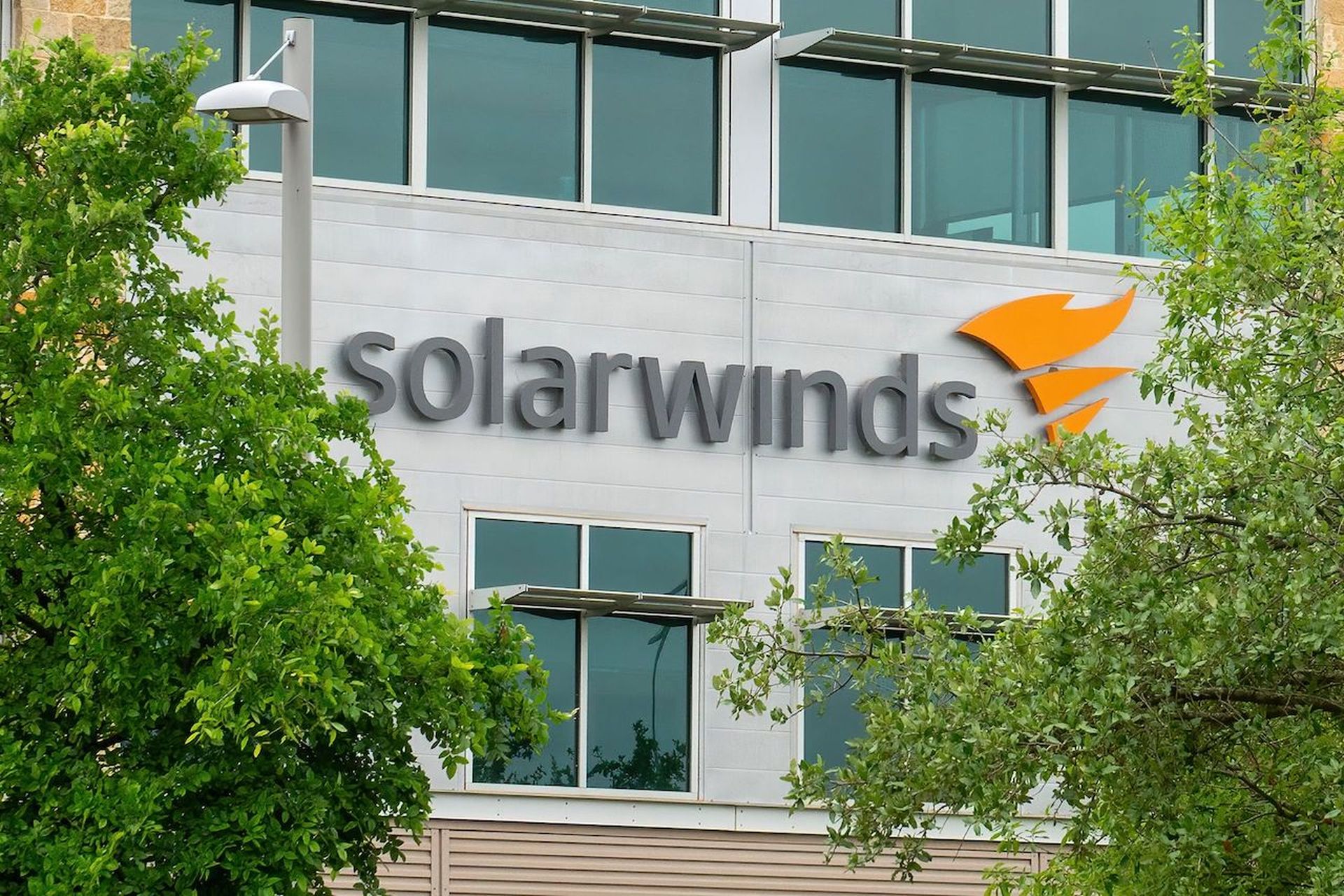
Cold calling in a pandemic has taken on a new meaning, and you need a new strategy. When the pandemic will “end” depends on whom you ask – spring, winter, sometime in 2022 – your guess is as good as mine. At this point lockdown feels “normal.” Frustrating and stressful, but normal. We’ve acclimated. Certain behaviors and patterns have been permanently altered. Across industries, digital interactions and digital cold calling have become the norm. Sure, some people will rush back to in-person sales meetings, drop-by cold calling and business travel, but it will be scaled back. Your prospects know remote meetings work. More of the sales process can be conducted virtually. Fewer opportunities will exist for connecting with prospects in person. Once we get to the other side of the pandemic, you’ll still be reliant on digital sales-prospecting strategies.
It’s Time to Change Your Cold-Calling Strategy
I understand many salespeople will be frustrated by the thought of cold calling digitally forever. Removing in-person activities cuts valuable cold-calling techniques from your B2B lead generation system. People are different when you talk with them in person. Being able to drop by a prospect’s office, especially when you are in the area and during the holidays, strengthens bonds and creates new opportunities.
That was the old world. The sooner you embrace how cold calling is changing, the sooner you’ll start to get sales prospecting results and end your frustration with trying to reach contacts.
People are becoming more accustomed to working from home. We’ve acclimated to the new normal. It’s time to integrate these digital strategies into your cold calling for 2021 and, possibly, permanently. Take LinkedIn for example.
Don’t Ignore LinkedIn

When we first ran our cold-call prospecting poll in Q2 2020, only 5% of respondents said they were successful using LinkedIn to get appointments. Q3 saw it jump up slightly. By the time we asked in Q4, 20% of respondents were having their first conversations with prospects on LinkedIn.
5 quick tips for using LinkedIn to cold call
1. Don’t send LinkedIn spam messages
Connect with prospects, send messages and don’t come across as desperate for a meeting or as robotic. Contacts can tell when you send a generic message. They despise self-promotional messages. Take the personalization techniques you successfully use in emails and adopt them for LinkedIn.
2. Integrate LinkedIn with your Bloodhound Follow-Up Strategy
Following the cadence outlined in The Bloodhound Prospecting Strategy for Recovery will keep you from looking like you’re sending spam messages to your contacts. It weaves LinkedIn naturally into your cold-call follow-up strategy and identifies when to send a LinkedIn message instead of an email. Grab your copy of The Bloodhound Prospecting Strategy for Recovery now.
3. Get an introduction on LinkedIn
You used to ask a colleague at an event to introduce you to their connections. We know you can do the same on LinkedIn. Yet few people take advantage of this feature anymore. Use it as part of your cold-calling strategy and make your connection requests stand out. Look up your cold-calling prospect list. You may have built it via LinkedIn, your CRM, Zoom or some other way. Compare it on LinkedIn and check for mutual connections.
4. Make emails pop with personalization
LinkedIn is a treasure trove of information. You’ll find out everything from where a person went to high school and jobs they’ve had to causes they care about. Take what you learn about a prospect and add it to your cold-call emails and LinkedIn messages to heighten the one-on-one, personal feeling.
5. Nurture your connections
You have hundreds, if not thousands, of connections on LinkedIn. These contacts can keep your pipeline full if you examine your target market and determine:
- Who to target
- What to say
- How to position your profile
LinkedIn Whisperer Brynne Tillman joined me as a guest in a Coffee with Kendra webinar and told attendees exactly how to use LinkedIn for prospecting. Watch the replay of Convert LinkedIn Content and Connections into Prospect Conversations and see what she shared.
Embrace Video, Smile and Hit Record
KLA has always been remote, so I was comfortable with video before the pandemic hit. But its importance took center stage when I was no longer able to meet with prospects in person, travel to see clients or attend conferences. Appearing on camera became a critical sales tool, a way to establish relationships and a resource for cold calling. Better still, prospects now wanted to meet on video.
Master selling on video
You can’t read important cues and body language on a phone call, but appearing on screen can be intimidating. In a poll last summer, 51% of people said they’d use video more if they felt comfortable being on-camera. Julie Hansen then shared techniques salespeople can use to overcome reluctance and ramp up remote sales. Turn on your video – even if your prospect doesn’t. You can watch the replay here.
Evaluate and improve
Remember the first time you heard a recording of your own voice? You probably thought, "That’s what I sound like?!" Recording video cold calls can be equally eye-opening. So, the next time you’re on a call, hit record. Then, set aside time to evaluate your performance. Pay attention to how you come across on camera and pinpoint areas for improvement. By playing back the recording, you’ll catch bad habits and gain confidence.
Send a video
Turning your camera on for a sales call with a prospect isn’t your only opportunity for appearing on camera. Record a short message and send it with a cold-call email or LinkedIn message. Tools like vidyard.com make it easy to create quick videos. It’s a way to make your cold-call messages stand out with prospects and get noticed.

In our video poll, most people said they did not send video cold-call messages. Buck the trend. When prospects see you, you stop being another name. You become a real person, and they’re more likely to engage.
Be an Active Remote Participant
When you attended conferences, did you silently move about the event, not talking to anyone? Of course not! You started conversations with other participants; you networked. Now think about what you do when you attend a webinar or virtual conference. If you’re like most people, you listen. Maybe you ask a question, patiently wait for the answer and take no further action. It’s time to start acting more like you did at in-person events and do some remote networking.
Not all webinar platforms facilitate conversation, but many do. Arrive at your next webinar or virtual conference session a few minutes early. Familiarize yourself with the platform and look for ways you can strike up conversations with participants. If there’s a chat, share your name and where you’re joining from. Throw in a fun fact. Participate in the conversation. Comment on what the speaker is saying. Ask questions. Share how people can reach you when the event ends. Once you get the ball rolling, other people will be more likely to follow. You’ll expand your network and create opportunities for future lead sharing to streamline with your cold-calling efforts.
Give Prospects a Reason to Engage with Your Cold-Call Emails
The chart we shared when talking about an increase in the effectiveness of using LinkedIn also showed an erosion in getting appointments from cold-call emails. I don’t think this means you should send fewer emails. I think it points to the need for better emails.
Ahead of our webinar How to Write Email Subject Lines that Get Replies, we asked people to share the best and worst subject lines in their inboxes. Multiple people flagged “Can we talk?” and “Meeting soon” as top offenders. When you don’t have an established relationship with your prospect, it’s hard to get results from cold-call emails with these subject lines. They will work when your prospects know you, but now they have to feel more personalized.
Switch up your subject lines and increase open rates
Stand out using cold-call email techniques we shared during the webinar. Here are 3 ideas:
1. <Prospect’s name>, let’s grab virtual coffee
You can’t meet in person, but you can re-create a casual atmosphere by suggesting you and your prospect share a virtual cup of coffee.
2. Promise to solve a problem
You can use the subject line to solve an issue you know your prospect is facing. In the cold-call email itself, you provide a quick tip to get rid of the problem and, at the end, ask to talk. Suggest a time to talk and include a link to an online scheduling assistant, like Calendly.
3. Be Invaluable
Like solving a problem, when your subject line conveys you understand your prospect’s problems, they’re more likely to engage with your cold-call email and you.
Make your cold-call emails warmer, more personal than in the past
We’re in a pandemic. People are sensitive. They’re also more open to chatting and relationship building with new contacts. That’s an ideal opportunity for you.
Inviting, warm, personal emails are a relationship-building tool. In your cold-call emails, don’t immediately dive into a hard sales pitch. Start with empathy and be relatable to form a connection with prospects. Use a friendly closing and be conversational. Read this fun blog post with 6 email personalities to avoid, especially for cold calling in 2021!
Cold Call Where Your Prospects Are
Remote work increases reliance on chat platforms, like Microsoft Teams. As adoption increases the apps will become more ingrained in how businesses operate. Your prospects will start taking full advantage of features like chatting with people outside their organization. This is a new avenue you should explore.
I have no doubt that at some point we’ll be able to use chat as a cold-call opportunity, but we aren’t there quite yet. Don’t immediately start chatting up prospects you don’t have a relationship with, but in your discussions, ask which platform they use. Then, if you have access to the same platform, offer to send documents and updates via the app instead of email.
If you are in account management and have access to a client’s platform to work with others in the same organization, you can cold call new contacts in that company. Think of it as a digital platform referral.
If at First You Don’t Succeed in Cold Calling …
Dozens of unreturned calls and messages are discouraging. There are times when I’ve wanted to give up on a prospect after 6 attempts. Instead, I take a deep breath and keep going. You can’t give in to the voices in your head saying your contact is never going to respond. Push out the negativity.
In normal times it takes 9–11 attempts to connect. Now it’s over 12 tries. Not everyone is willing to put in this level of effort, which gives you the advantage.

Don’t be like the salespeople who give up after 1–3 attempts. Call, send emails, reach out on LinkedIn. If you’re determined, you can capture your prospect’s attention. Download our guide The Bloodhound Prospecting Strategy for Recovery to see how to combine cold-call strategies, get noticed, connect with prospects and uncover new opportunities.
Businesses Are Figuring Out How to Thrive in a Pandemic – You Can Too
Many business owners sat on the sidelines or cautiously dipped their toes in the water in 2020. This year, they know they can’t sit on the sidelines forever. They’re making buying decisions and need your solutions. Digital prospecting strategies are your cold-call tools for reaching these active buyers. Stay determined, stay visible and don’t be afraid to try new approaches. Use our library of resources to discover new ways to cold call and thrive.
If you want tailored training or assistance adapting your prospecting strategies for our new digital cold-call world, we can help. Schedule a meeting with me today or call us at +1-888-302-9685, and let’s discuss your vision and how we can help.
Author Kendra Lee is CEO at KLA Group. Read more from Kendra Lee here.




